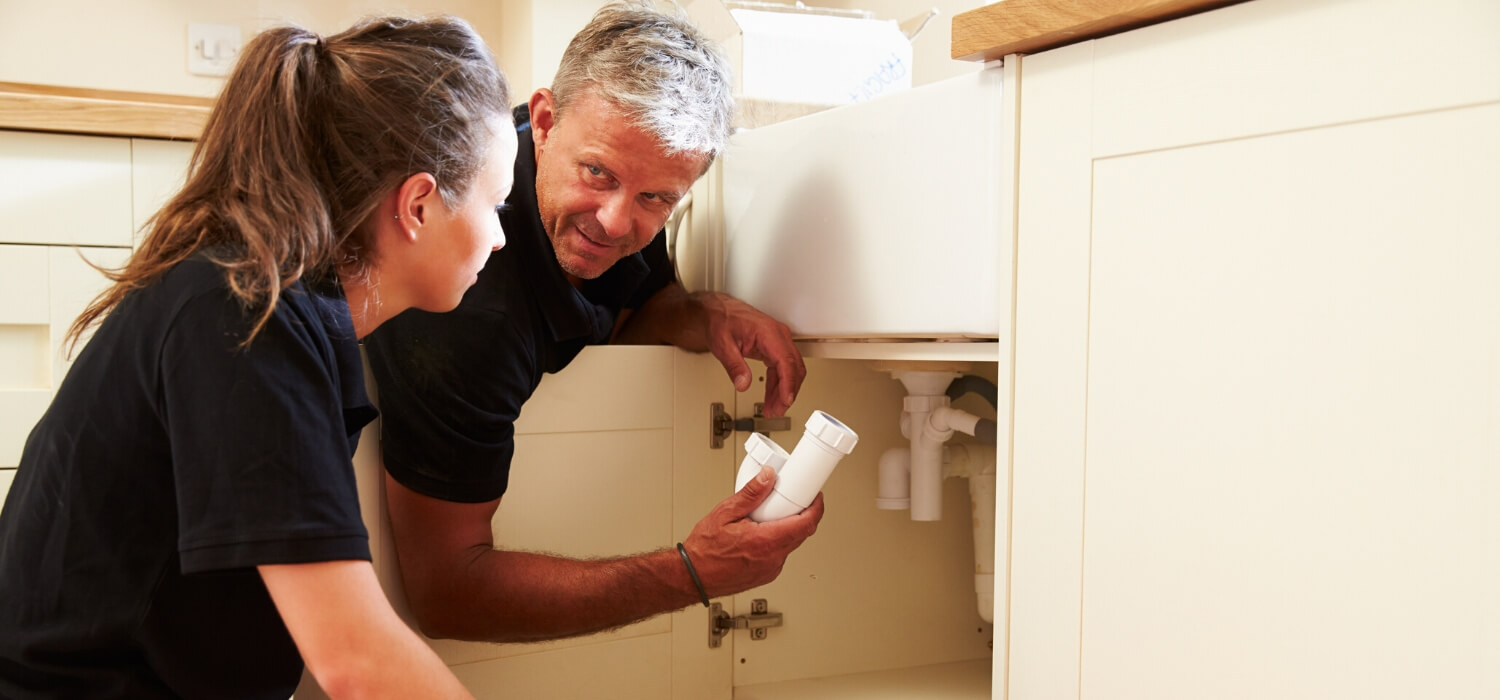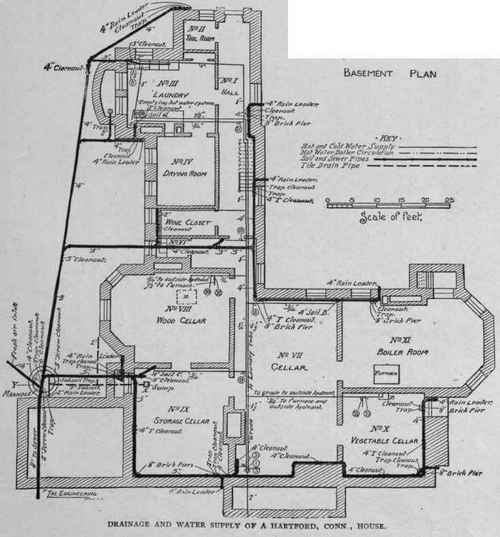Why Your Property's Plumbing System Works: Structure
Why Your Property's Plumbing System Works: Structure
Blog Article
We have come across this great article on The Inner Workings of Your Home's Plumbing directly below on the web and accepted it made perfect sense to discuss it with you on this site.

Recognizing exactly how your home's plumbing system functions is vital for every homeowner. From supplying clean water for drinking, food preparation, and showering to securely eliminating wastewater, a well-maintained pipes system is vital for your household's health and convenience. In this comprehensive overview, we'll explore the intricate network that composes your home's plumbing and deal suggestions on upkeep, upgrades, and dealing with usual concerns.
Intro
Your home's pipes system is more than simply a network of pipes; it's an intricate system that ensures you have access to clean water and reliable wastewater removal. Recognizing its elements and how they interact can assist you protect against costly fixings and make certain whatever runs efficiently.
Fundamental Components of a Pipes System
Pipes and Tubes
At the heart of your pipes system are the pipes and tubes that carry water throughout your home. These can be constructed from various products such as copper, PVC, or PEX, each with its benefits in regards to sturdiness and cost-effectiveness.
Components: Sinks, Toilets, Showers, etc.
Components like sinks, toilets, showers, and tubs are where water is used in your home. Comprehending just how these fixtures link to the plumbing system aids in detecting problems and preparing upgrades.
Valves and Shut-off Points
Shutoffs manage the circulation of water in your pipes system. Shut-off shutoffs are critical throughout emergencies or when you require to make repair work, allowing you to separate parts of the system without disrupting water circulation to the entire home.
Supply Of Water System
Key Water Line
The primary water line connects your home to the local water system or a private well. It's where water enters your home and is distributed to different components.
Water Meter and Stress Regulatory Authority
The water meter steps your water usage, while a pressure regulatory authority makes certain that water streams at a secure pressure throughout your home's plumbing system, protecting against damage to pipes and fixtures.
Cold Water vs. Warm water Lines
Recognizing the difference between cold water lines, which supply water directly from the primary, and warm water lines, which lug warmed water from the water heater, aids in troubleshooting and planning for upgrades.
Drain System
Drain Pipeline and Traps
Drain pipes lug wastewater far from sinks, showers, and bathrooms to the sewage system or septic tank. Traps prevent sewer gases from entering your home and likewise trap debris that could trigger blockages.
Air flow Pipelines
Air flow pipes permit air right into the water drainage system, preventing suction that can slow water drainage and create catches to vacant. Appropriate air flow is important for maintaining the integrity of your plumbing system.
Significance of Appropriate Drain
Guaranteeing appropriate drainage prevents back-ups and water damages. Regularly cleaning up drains pipes and preserving catches can protect against costly fixings and extend the life of your pipes system.
Water Heater
Kinds Of Hot Water Heater
Hot water heater can be tankless or typical tank-style. Tankless heating systems heat water as needed, while storage tanks save warmed water for immediate use.
Updating Your Plumbing System
Reasons for Upgrading
Updating to water-efficient components or replacing old pipelines can improve water high quality, decrease water costs, and raise the worth of your home.
Modern Plumbing Technologies and Their Advantages
Check out innovations like smart leakage detectors, water-saving toilets, and energy-efficient water heaters that can conserve money and minimize ecological impact.
Price Considerations and ROI
Compute the in advance costs versus long-lasting savings when taking into consideration plumbing upgrades. Several upgrades pay for themselves via decreased energy bills and fewer fixings.
Exactly How Water Heaters Link to the Pipes System
Recognizing how hot water heater connect to both the cold water supply and warm water distribution lines assists in detecting problems like inadequate warm water or leaks.
Maintenance Tips for Water Heaters
Consistently flushing your hot water heater to get rid of debris, checking the temperature level setups, and evaluating for leaks can prolong its life-span and improve energy performance.
Common Plumbing Problems
Leakages and Their Reasons
Leaks can occur due to maturing pipelines, loosened fittings, or high water pressure. Attending to leakages without delay prevents water damage and mold and mildew development.
Clogs and Obstructions
Blockages in drains pipes and commodes are commonly triggered by purging non-flushable things or an accumulation of oil and hair. Making use of drainpipe displays and bearing in mind what drops your drains can stop obstructions.
Indicators of Plumbing Problems to Look For
Low tide stress, slow-moving drains, foul odors, or unusually high water bills are indicators of possible pipes problems that ought to be attended to immediately.
Pipes Upkeep Tips
Routine Examinations and Checks
Set up yearly pipes assessments to capture problems early. Look for indicators of leakages, deterioration, or mineral build-up in taps and showerheads.
Do It Yourself Upkeep Tasks
Easy tasks like cleaning faucet aerators, looking for commode leaks using dye tablet computers, or shielding subjected pipes in cold climates can stop significant pipes problems.
When to Call a Professional Plumber
Know when a plumbing issue needs expert experience. Trying intricate repair work without appropriate understanding can cause even more damage and higher repair service expenses.
Tips for Minimizing Water Use
Straightforward behaviors like dealing with leakages immediately, taking much shorter showers, and running full lots of washing and meals can save water and reduced your energy bills.
Eco-Friendly Pipes Options
Think about sustainable plumbing products like bamboo for flooring, which is durable and environmentally friendly, or recycled glass for kitchen counters.
Emergency situation Readiness
Actions to Take During a Plumbing Emergency situation
Know where your shut-off shutoffs lie and just how to turn off the water supply in case of a ruptured pipeline or major leakage.
Relevance of Having Emergency Situation Get In Touches With Handy
Maintain get in touch with information for regional plumbings or emergency situation services easily available for quick action during a plumbing situation.
Ecological Effect and Preservation
Water-Saving Fixtures and Devices
Installing low-flow taps, showerheads, and commodes can substantially reduce water use without compromising efficiency.
DIY Emergency Situation Fixes (When Applicable).
Temporary solutions like using air duct tape to patch a leaking pipeline or placing a container under a dripping tap can minimize damages until a professional plumbing professional arrives.
Verdict.
Understanding the makeup of your home's pipes system empowers you to maintain it properly, conserving time and money on fixings. By following routine upkeep routines and remaining informed regarding contemporary pipes modern technologies, you can guarantee your pipes system runs effectively for several years ahead.
HOW YOUR PLUMBING SYSTEM WORKS
Which Pipes Do What?
Blue lines = fresh water supply entering the building Red lines = hot water supply entering the building Grey lines = pipes carrying waste away from the building and venting pipes carrying gases away from the building (through the roof) YOUR MAIN PLUMBING SYSTEMS
There are two main plumbing systems that support your home s basic plumbing needs one that brings clean water into your home, and one that sends dirty water away from your home. Connected to the toilet, bath, shower, and other faucets in your home, these two systems keep your water flowing in the right directions.
ACCESSING FRESH WATER
Fresh and clean water is brought into your home through the main water supply line . Filtered through one pipe, this water is pressured to flow into the various fixtures in your home at any given time.
This water can be sourced from a well located on your property, a pond or river (mostly cottages), or, as in most cases, from the city s municipal water treatment centre. However, it is important to note that water that is untreated, such as the water siphoned from ponds or rivers, may not be safe to drink. Personal water supplies always need to be treated for hardness and contaminants before consumed.
MUNICIPAL WATER SUPPLIES
Improve taste and odour Remove sediment Eliminate hardness Reduce chlorine COLD WATER SUPPLY VS. HOT WATER SUPPLY
Cold water flows into your home or building through the service line, which then distributes hot or cold water to your fixtures. This line is most commonly run through a central column that runs floor to floor. Hot water runs in short and straight pipes as the longer the pipeline, the more heat that will be lost in the transfer. Having shorter pipes also allows residents to access hot water more quickly.
WASTE WATER SYSTEM
Your wastewater system is divided into two parts pipes that send wastewater away from your home and venting pipes that send sewer gas away from your home. Sewage water travels through pipes that flush the water and waste towards local sewers that are operated and managed by your city or town. Most sewer systems rely on gravity to move the wastewater to where it needs to go.
The further away from your toilet or sink, the larger wastewater pipes become. This allows for waste to be disposed of from various parts of your home or business at once without pipe blockages. The angle and flow of these pipes are also essential for keeping your waste pipes clear of build up.
https://harrisplumbing.ca/how-your-home-plumbing-system-works/

As a fervent reader on Exploring Your Homes Plumbing Anatomy, I imagined sharing that blog post was worth the trouble. Liked our piece of writing? Please share it. Help another person locate it. I am grateful for being here. Please visit our blog back soon.
Call Today Report this page